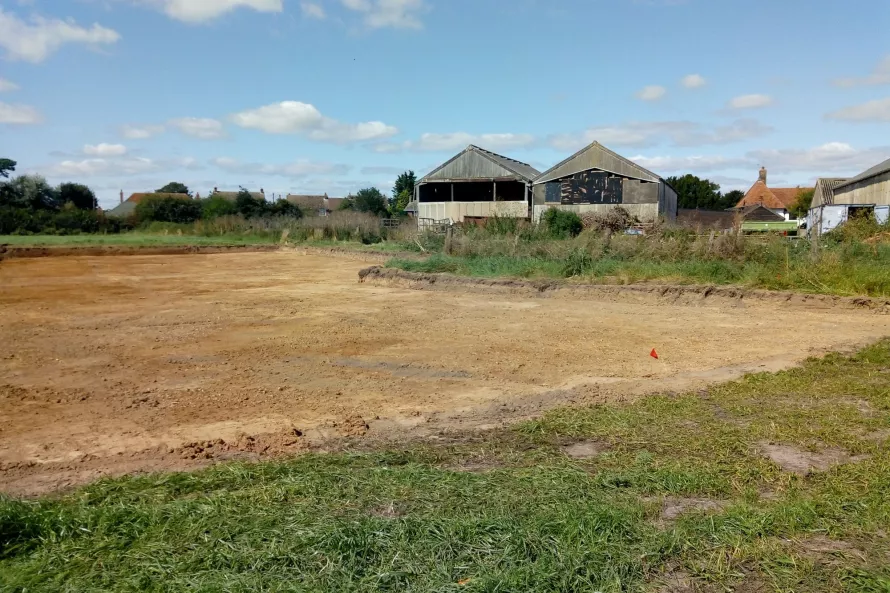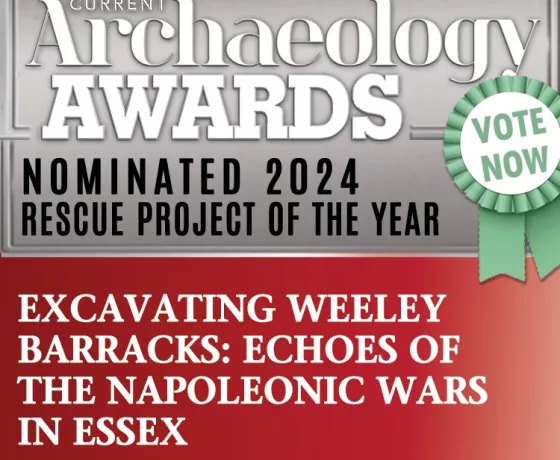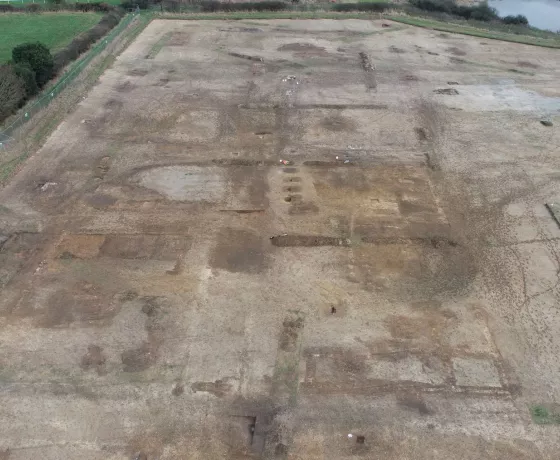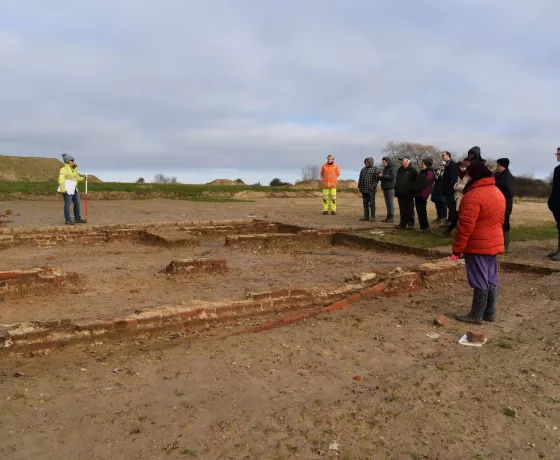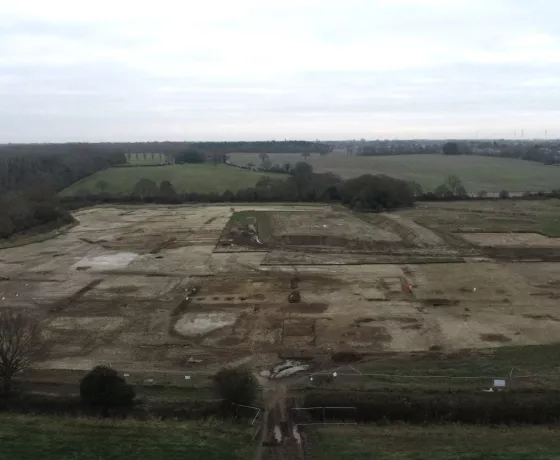Our excavation has started in the north-west corner of the site, behind Thorpe Road. Under the watchful eye of Nick, our archaeological Project Officer, a mechanical digger has been carefully removing about 40-50cm of overlying topsoil and sub-soil to reveal the natural sand and gravel underneath. We're looking for changes in the colour and texture of the natural geology which shows that it has been disturbed by people in the past rather than by natural processes, and we're looking for clues such as structures and artefacts left behind which might tell us about when people were here and what they were doing.
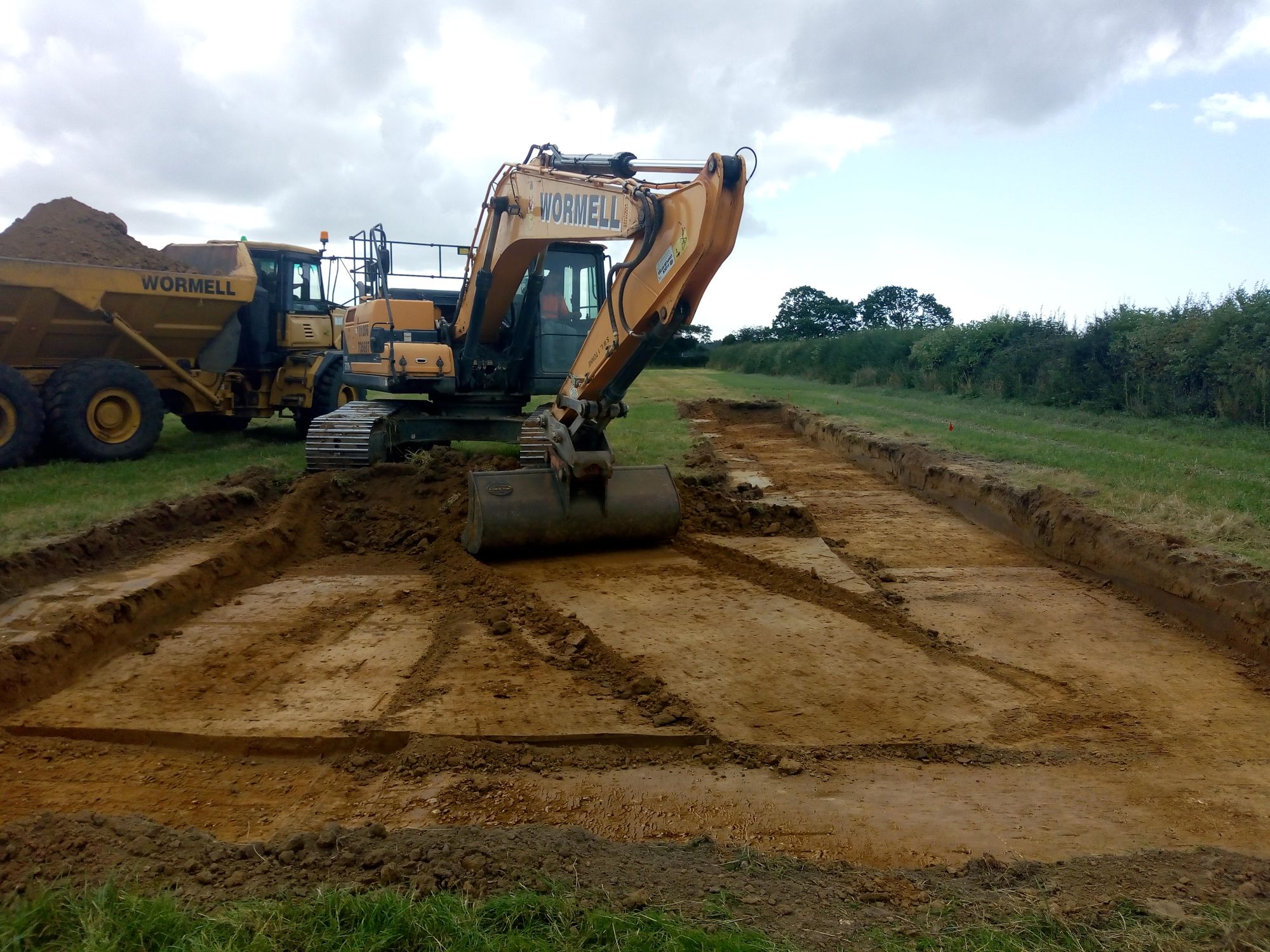
When we dug some trial trenches here at the start of 2021, we found a couple of pits containing Neolithic pottery and part of a ditch with a shaped flint flake. By opening up a larger area of the ground and digging more of the archaeology, we hope to better understand these archaeological remains. While Nick's been watching the digger and dumper truck move the soil to the side of the field, he's already spotted a few finds. Here's a sherd (broken fragment) of pottery. We'll need to wash it and have our pottery specialists take a look, but it's probably prehistoric.
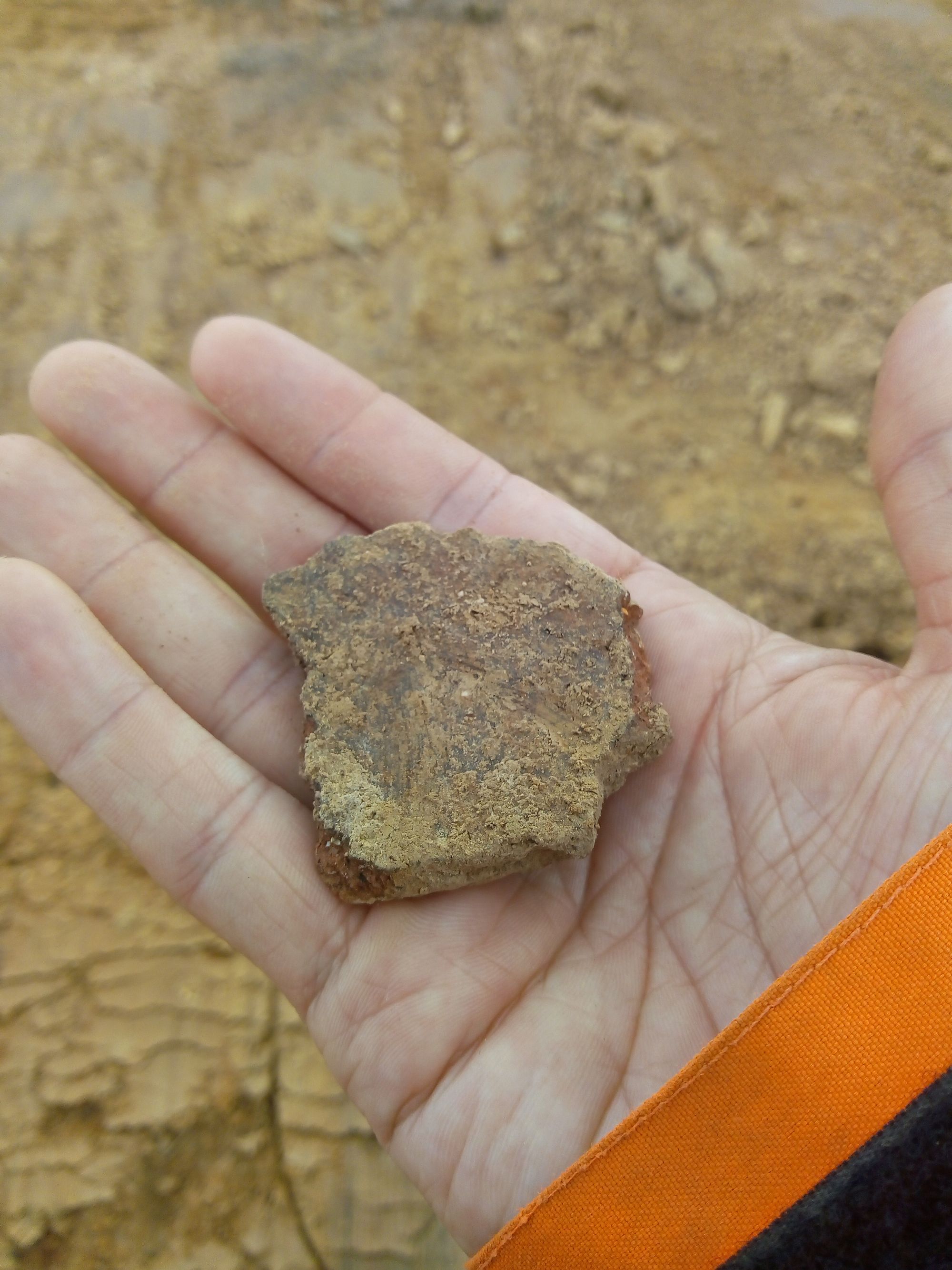
And here's a photo of a more familiar modern object which we frequently find while preparing sites for excavation - do you know anyone who's been practising their golf swing nearby?!
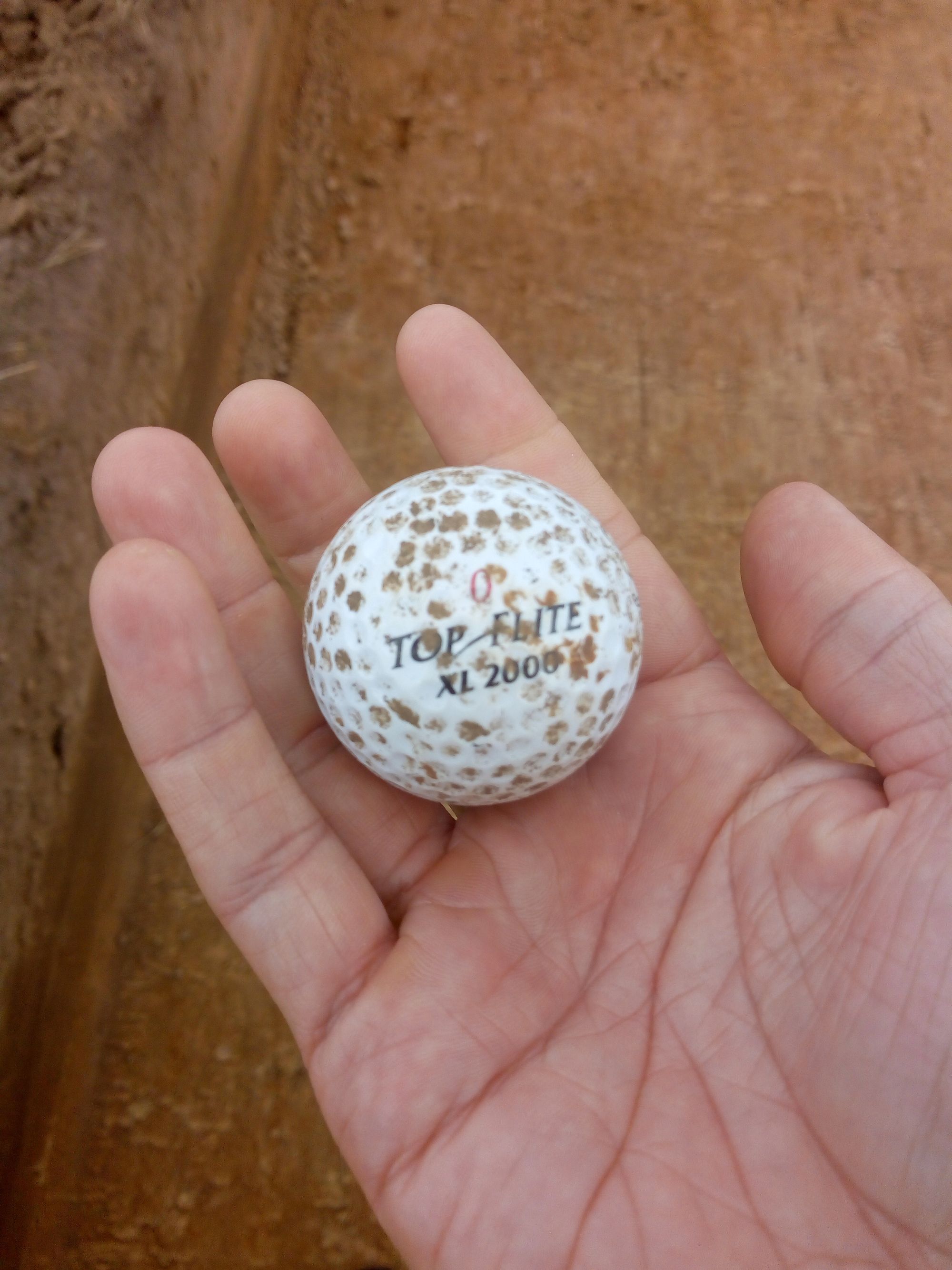
Other posts in this collection
Read our latest posts about the archaeological investigations at Weeley.

